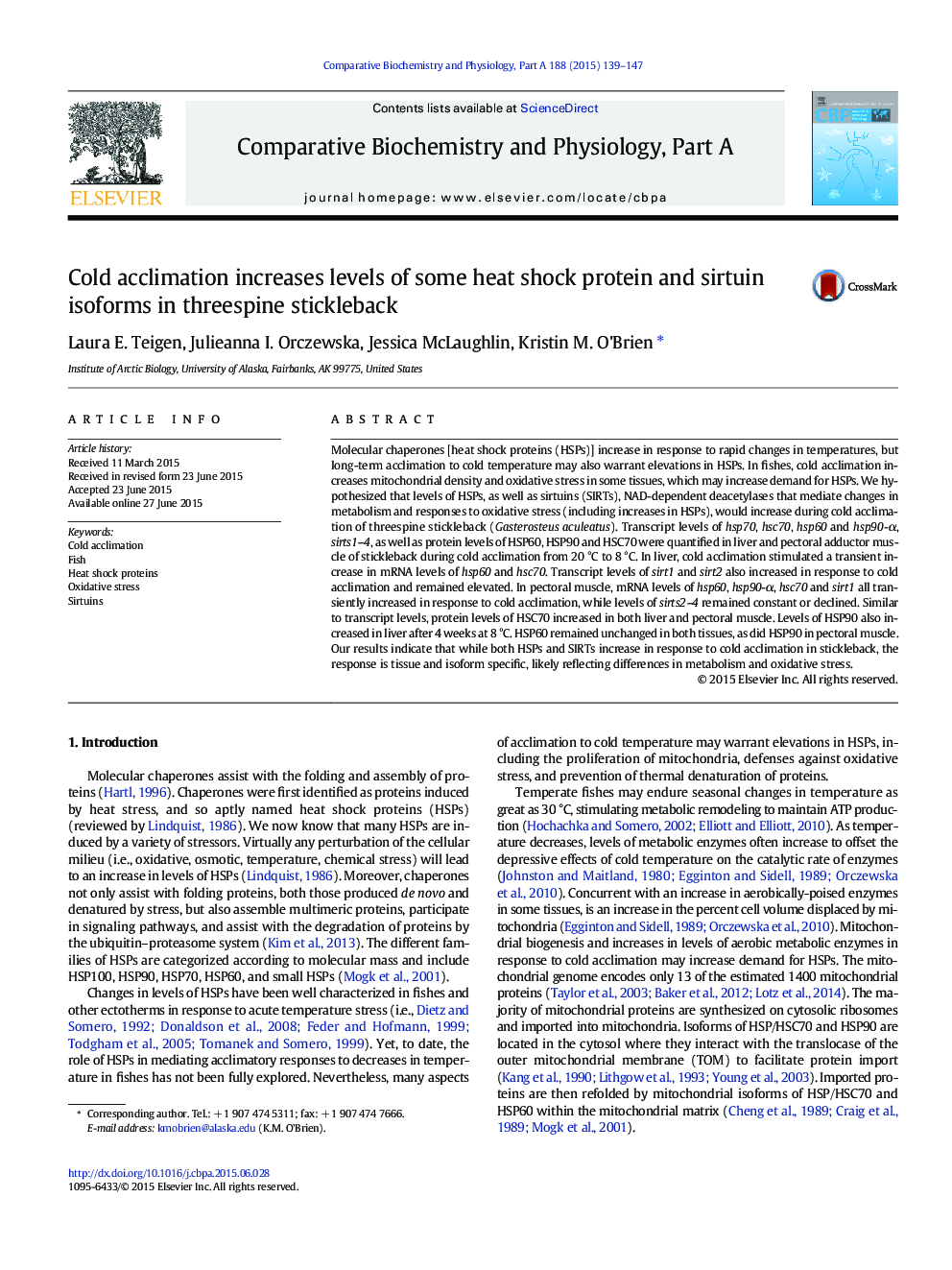| کد مقاله | کد نشریه | سال انتشار | مقاله انگلیسی | نسخه تمام متن |
|---|---|---|---|---|
| 1971924 | 1538999 | 2015 | 9 صفحه PDF | دانلود رایگان |

Molecular chaperones [heat shock proteins (HSPs)] increase in response to rapid changes in temperatures, but long-term acclimation to cold temperature may also warrant elevations in HSPs. In fishes, cold acclimation increases mitochondrial density and oxidative stress in some tissues, which may increase demand for HSPs. We hypothesized that levels of HSPs, as well as sirtuins (SIRTs), NAD-dependent deacetylases that mediate changes in metabolism and responses to oxidative stress (including increases in HSPs), would increase during cold acclimation of threespine stickleback (Gasterosteus aculeatus). Transcript levels of hsp70, hsc70, hsp60 and hsp90-α, sirts1–4, as well as protein levels of HSP60, HSP90 and HSC70 were quantified in liver and pectoral adductor muscle of stickleback during cold acclimation from 20 °C to 8 °C. In liver, cold acclimation stimulated a transient increase in mRNA levels of hsp60 and hsc70. Transcript levels of sirt1 and sirt2 also increased in response to cold acclimation and remained elevated. In pectoral muscle, mRNA levels of hsp60, hsp90-α, hsc70 and sirt1 all transiently increased in response to cold acclimation, while levels of sirts2–4 remained constant or declined. Similar to transcript levels, protein levels of HSC70 increased in both liver and pectoral muscle. Levels of HSP90 also increased in liver after 4 weeks at 8 °C. HSP60 remained unchanged in both tissues, as did HSP90 in pectoral muscle. Our results indicate that while both HSPs and SIRTs increase in response to cold acclimation in stickleback, the response is tissue and isoform specific, likely reflecting differences in metabolism and oxidative stress.
Journal: Comparative Biochemistry and Physiology Part A: Molecular & Integrative Physiology - Volume 188, October 2015, Pages 139–147